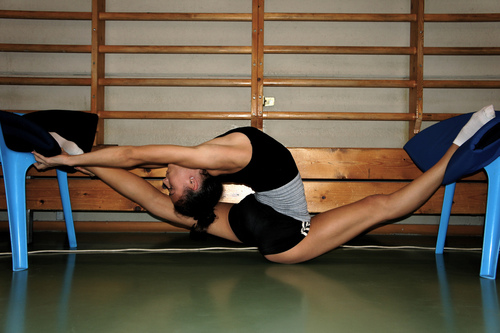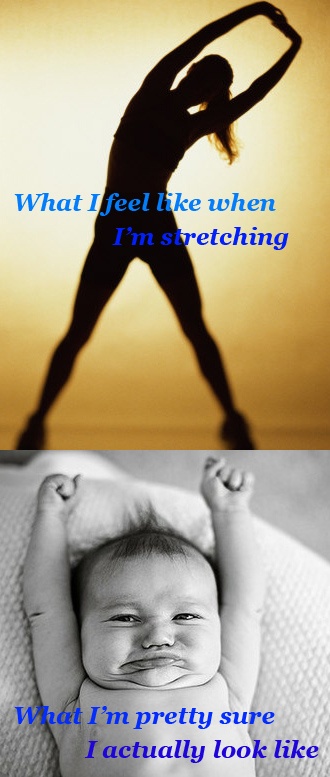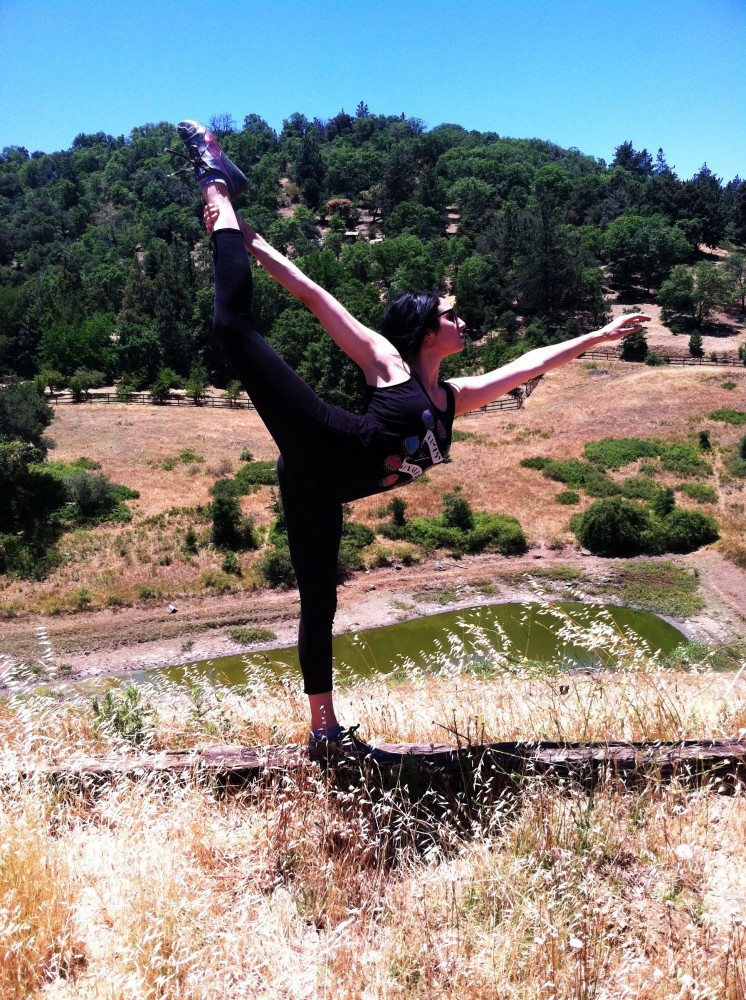WOW! So it’s been quite a while since I’ve posted here. I want to start this stretching series post by apologizing for my long absence. I’ve been really sick over the past two months and it’s actually stopped me entirely from going to ballet and stretching. As you can imagine, that’s been pretty frustrating… but I plan on touching on that in another post so stay tuned for that. Unfortunately I’m still only able to do very light stretching, and when it do it it’s far from pretty so I decided that I’d continue this post in the series by using found resources and photos. Hopefully within a few weeks I’ll be able to get back into the game and get some original photos and stretches for you guys!
Today I wanted to cover leg stretches, with some emphasis on knees since I know someone requested it! 🙂 The following are some of my favorite leg stretches, some of which not only improve flexibility but strength as well. I’m all for a double whammy!
1. Triangle pose: Ok so when I first stumbled across this yoga pose I looked at it and said “PIECE OF CAKE”. Then I tried it… haha. It’s not easy, folks! It requires hamstring and groin flexibility as well as core strength to maintain balance.
- Stand with your legs about 3.5 to 4 feet apart.
- Turn out your right foot, and leave your left foot turned in.
- Lift your arms straight out to your sides.
- Tilt your upper body over your right leg, stretching your arms and legs
- Twist at the waist, lowering your right hand to your right ankle.
- Repeat on the other side. For an added knee stretch, bend the knee of the leg that is turned out.
2. Knee Stretch: This one is pretty straight forward. I find that it helps stretch not only my legs and knees but also my lower back. I find this one super relaxing and love doing it before bed! Just lie on your back and bring each knee up to your chest one at a time, hold for about 30 seconds (longer if you’d like), and then lower your leg back to the ground. Easy peasy, but very helpful for tight knees.
3. Forward lunge/Warrior Pose: This stretch and yoga move is helpful for stretching the knee, hamstring, and groin all depending on how deep you can take it.
- Start with your legs about 2-4 feet about depending on how far you would like to/can stretch. Keep one foot turned in, the other turned out.
- Rotate toward the turned out foot and bend that knee.
- Stretch as far as you can without discomfort.
- Repeat on the other side! (don’t forget this!)
4. Hamstring Stretch: I love this one. I do this using Therabands but it can easily be done using a strap, rolled towel, bungee cord, etc. Just lie on your back and wrap whatever youre using under or around your foot. Then, trying to keep your leg straight, pull your leg up with your arms. When you feel that you’re about to need to bend your knee, stop and hold. Over time you’ll be able to go farther but don’t push yourself too hard or you could end up in a world of pain!
5. Hurdle Stretch: This is an oldie but goodie. Sit with your legs in a V position, as far as you can open them. Bend one leg in and lean toward your straight leg. You can do this facing straight toward the leg or to the side. Make sure you don’t bounce!
Hopefully these leg stretches (with knee emphasis) can help some of you! Let me know what kind of stretches you’d like to see in the future. I apologize for the lack of new pictures, I hope that when the next post comes along I will be able to actually participate!
-Caysie.







